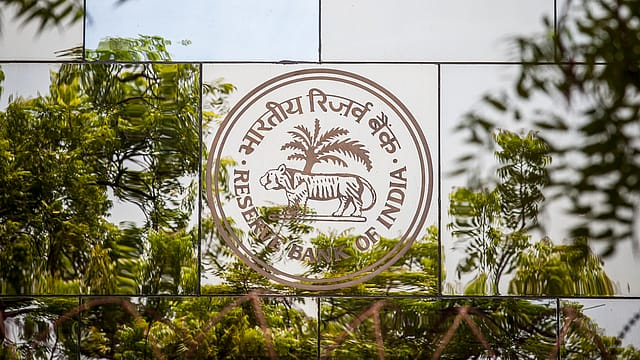RBI MPC raises GDP growth forecast to 6.5% for FY24
ADVERTISEMENT

The Reserve Bank of India's (RBI) monetary policy committee on Thursday marginally hiked its gross domestic product (GDP) forecast for the financial year 2023-24 to 6.5% from 6.4% projected earlier.
In a press conference after the MPC meeting, RBI governor Shaktikanta Das said India's economic activity remains resilient and the higher rabi production has brightened the prospects for agriculture sector and rural demand. Rabi foodgrains production is estimated to increase by 6.2% in FY23.
"The steady growth in contact-intensive services should be positive for urban demand. The government's focus on capital expenditure, capacity utilisation above long-period average and moderating commodity prices should bolster manufacturing and investment activity. The drag from net external demand may continue due to increased global headwinds. The protracted geopolitical tensions and global financial market volatility pose downside risks to the outlook. Taking all these factors into consideration, real GDP growth for 2023-24 is projected at 6.5%, with Q1 at 7.8%; Q2 at 6.2%; Q3 at 6.1%; and Q4 at 5.9%," Das said, adding the risks are evenly balanced.
The RBI's forecast comes just days after the World Bank slashed India's GDP growth estimate to 6.3% for 2023-24 from 6.6%, citing lower consumption growth and challenging external conditions.
The second advance estimates released by the National Statistical Office (NSO) in February had placed India's real gross domestic product (GDP) growth at 7% in FY23.
December 2025
The annual Fortune 500 India list, the definitive compendium of corporate performance, is out. This year, the cumulative revenue of the Fortune 500 India companies has breached $2 trillion for the first time. Plus, find out which are the Best B-schools in India.
The Monetary Policy Committee on Thursday unanimously decided to keep the repo rate unchanged at 6.5%. The MPC also decided by a majority of 5 out of 6 members to remain focused on the withdrawal of accommodation to ensure inflation progressively aligns with the target, while supporting growth.
The MPC has increased the policy repo rate cumulatively by 250 basis points in the last 11 months.
"The year 2023 began on a promising note as supply conditions were improving, economic activity remained resilient, financial markets exuded greater optimism and central banks were steering their economies towards a soft landing. In just a few weeks during March, this narrative has undergone a dramatic shift. The global economy is now witnessing a renewed phase of turbulence with fresh headwinds from the banking sector turmoil in some advanced economies," Das said.
Bank failures and contagion risk have brought financial stability issues to the forefront, the RBI governor said in the light of Silicon Valley Bank and Credit Suisse crises.
"With the fight against inflation far from over, the global economy is now confronted with serious financial stability challenges from the recent banking sector developments in some advanced economies. This calls for a reappraisal of the responsibilities of the regulators and the regulated entities world over and their collective role in safeguarding the stability of the financial system. While regulators need to identify potential vulnerabilities and take proactive regulatory and supervisory measures, it is incumbent upon the regulated institutions to exercise due diligence in their risk management and corporate governance practices. They need to pay close attention to asset-liability mismatches and profile of their deposit base, while building up adequate capital buffers and conducting periodic stress tests," he added.
